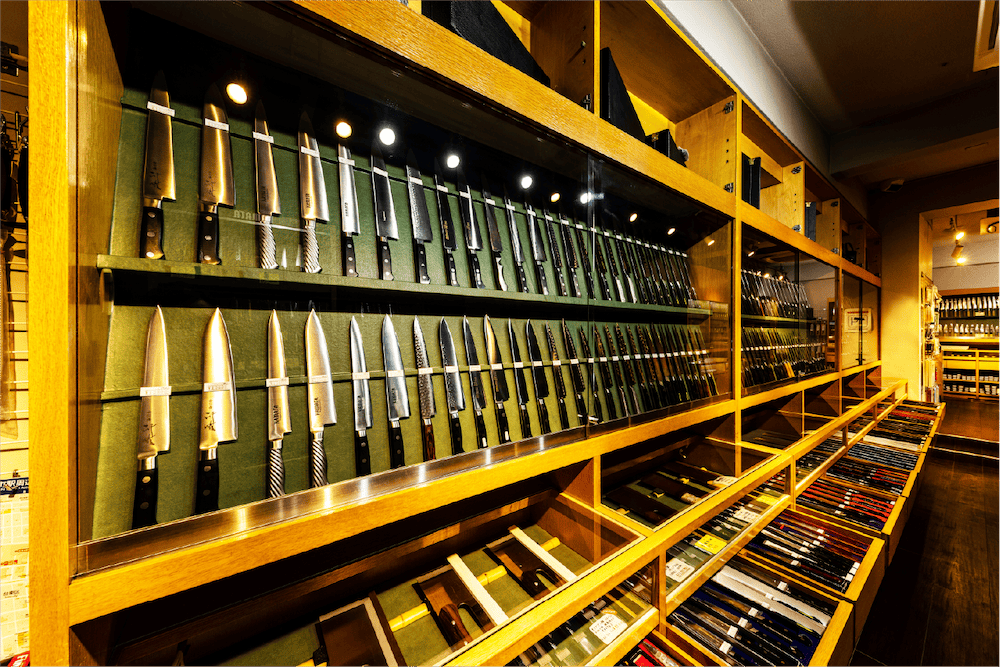Tsuchime” refers to the fine hammered pattern that remains on forged blades in the manufacture of kitchen knives and blades. This is derived from the marks left by the hammer (forging) used to apply force to the blade during the forging process.
The characteristics and significance of hammered marks are explained below:
- Forging marks: The production of blades involves a forging process in which steel is heated and beaten into shape. A mallet is used to apply force to the blade. Hammer marks are left on the blade and may create a fine pattern.
- Aesthetic element: The hammered marks left on the blade create a beautiful pattern that gives the knife or blade a unique appearance. This is an important element in traditional Japanese knife culture, which views knives as an artistic craft.
- Indication of forging quality: The fineness and uniformity of the hammers is also an element that indicates the high skill of the craftsman. The evenness of the hammers is considered a sign of forging skill and careful workmanship.
- Effect on the food: Some cooks and knife enthusiasts believe that a hammered knife has less friction with the food and a cleaner cutting surface. However, this is a subjective assessment and opinions may differ on the effect on the food.
Whether or not a knife is hammered depends on the knife’s design and manufacturing process. In high-end knives or knives using traditional manufacturing methods, hammered edges may be incorporated as an aesthetic element.
*This is a translation by a translation tool.

